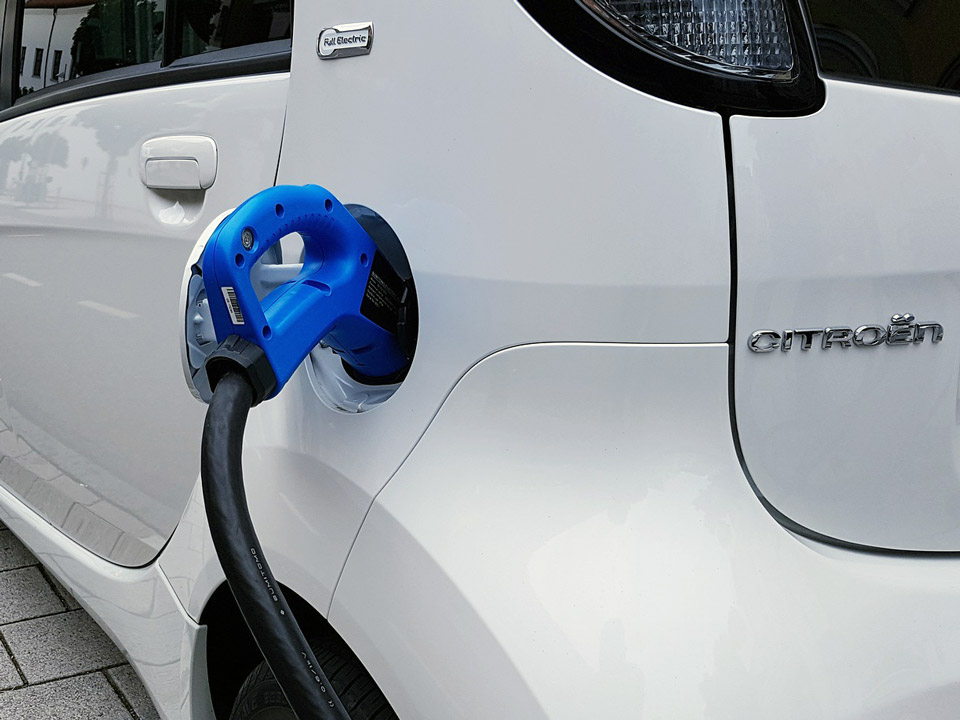Using Electric and Hybrid Vehicles
Lower tax duty and grant incentives from Government have helped raise their profile.
 Despite this, they’re still generally more expensive than their internal combustion engine cousins. As a result, sales have so far predominantly been in the retail sector but as technology improves, we’re likely to see increasing interest in the commercial arena.
Despite this, they’re still generally more expensive than their internal combustion engine cousins. As a result, sales have so far predominantly been in the retail sector but as technology improves, we’re likely to see increasing interest in the commercial arena.
Employers have a duty to ensure electrical safety for their employees and other visitors to their premises, as well as protecting any electrical equipment provided.
The popularity and complexity of electric and hybrid vehicles introduces more safety considerations and hazards. Any employees working with electrical equipment or vehicles should have adequate training so they can work safely and the risk of injury and fire/explosion is reduced.
Plug-in electric vehicles originally used a “slow” recharge system however there are now models with “fast” and “rapid” recharging systems. Different makes and shapes of recharging cable connectors also add to the variations between vehicles. The type of battery in a plug-in electric vehicle can also vary according to the make and model of car.
As environmental awareness continues to grow, the use of electric and hybrid vehicles (E&HVs) is steadily increasing.
There are three types of E&HVs:
Battery Electric Vehicles
Use a large capacity battery and one or more electric motors to drive the vehicle. The battery is charged from the electricity supply network when the vehicle is not in use. Some energy may be recovered during braking.
Hybrid Electric Vehicles
Typically have two sources of energy: an internal combustion engine, diesel or petrol, and a battery. The vehicle automatically selects the most fuel efficient source of power to meet the driver’s commands and may use both simultaneously. Both the internal combustion engine and vehicle braking and recovery systems are used to charge the battery.
Plug-In Hybrid Electric Vehicles
Are similar to hybrid electric vehicles but with the added attribute that they can also be charged directly from the electricity supply network.
Hybrid and BEV (battery electric vehicles) commonly operate with battery voltages typically from 300v DC to 600v DC — anything beyond 60v DC is classed by H&S as ‘high-risk’ and can cause serious injury or even fatalities.
Therefore, there’s is a real risk of electrocution if the hazard is not appreciated and controlled. The battery systems store significant amounts of energy, sufficient to move a one ton vehicle more than 50 miles. Should this power system be short circuited or suddenly released, it could cause:
* Significant damage *Fire *Explosion
There is also a risk that the batteries could explode and/or release harmful and toxic chemicals if not maintained and handled in accordance with the manufacturer’s instructions. There are substantial differences in the designs of E&HVs from different manufacturers. Having information specific to the manufacturer and the vehicle being worked on is important in identifying what actions are necessary to work safely.
Risks of working with E&HVs
E&HVs introduce hazards into the workplace in addition to those normally associated with the repair and maintenance of vehicles. These include:
- High voltage components and cables capable of delivering a fatal electric shock
- Stored electrical energy with the potential to cause explosion or fire
- Components that can hold a dangerous voltage even when vehicles are “off”
- Unexpected movement of electric motors or the vehicle itself, due to magnetic forces within the vehicle and its systems
- Heavy, bulky and awkward to handle components. High-voltage batteries are several times heavier than conventional batteries, so lifting aids and devices are required to prevent musculoskeletal disorders
- Explosive gases and harmful liquids which can be released if batteries are damaged, overcharged or incorrectly modified
- Electric vehicles are silent when operated. There’s a risk that people would be unaware of planned or unexpected movements
- Hybrid vehicles can start their internal combustion engine automatically when the ignition is on and the vehicle detects that the battery has discharged to a level at which recharging is necessary
- High electric currents in batteries and high-voltage systems in electric vehicles can cause magnetic fields which can induce eddy currents in the human body. Risks arising from electromagnetic fields are therefore potentially dangerous for mechanics and others with active implants such as cardiac pacemakers.
ASSESSING RISKS – An assessment of the hazards and risks faced by workers will be required at one or more levels. A generic workplace assessment is likely to identify most of the issues covered in the general precautions outlines above. You will also need to ensure all staff have had the necessary training from the manufacturer’ so they are able to carry out the maintenance required.
Risks of working with E&HVs
E&HVs introduce hazards into the workplace in addition to those normally associated with the repair and maintenance of vehicles, roadside recovery and other vehicle related activities. These include:
- the presence of high voltage components and cabling capable of delivering a fatal electric shock
- the storage of electrical energy with the potential to cause explosion or fire
- components that may retain a dangerous voltage even when a vehicle is switched off
- electric motors or the vehicle itself that may move unexpectedly due to magnetic forces within the motors
- manual handling risks associated with battery replacement
- the potential for the release of explosive gases and harmful liquids if batteries are damaged or incorrectly modified
- the possibility of people being unaware of vehicles moving as when electrically driven they are silent in operation
- the potential for the electrical systems on the vehicle to affect medical devices such as pacemakers
Maintenance and repair excluding high voltage electrical systems
Refer to vehicle specific sources of information from the manufacturer and trade bodies to identify precautions necessary to prevent danger.
Remote operation keys should be kept away from the vehicle to prevent any accidental operation of electrical systems and accidental movement of the vehicle. Keys should be locked away with access controlled by the person working on the vehicle. If the key is required during the work the person working on the vehicle should check that the vehicle is in a safe condition before the key is retrieved.
Visually check the vehicle for signs of damage to high voltage cabling (usually coloured orange) or electrical components before starting any work on the vehicle. Unless a specific task requires the vehicle to be energised always isolate or disconnect the high voltage battery in accordance with manufacturer’s instructions.


